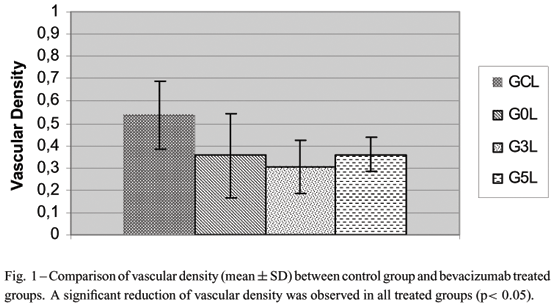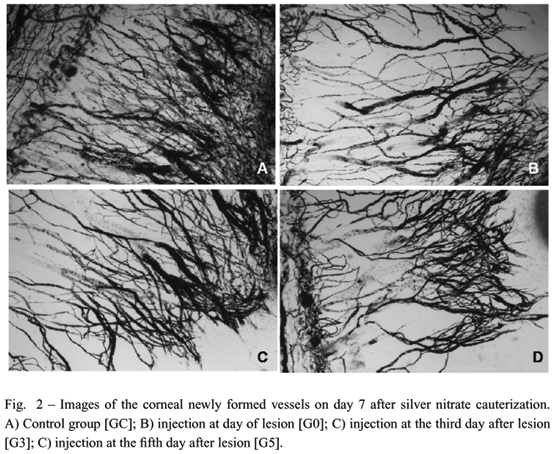The purpose of this study was to evaluate the effects of the use of the subconjunctival injection of bevacizumab (Avastin®) on angiogenesis in the rat cornea. Corneas of 20 Wistar male rats were cauterized with silver nitrate crystal. Animals were divided in four groups: control group (GC) that received subconjunctivally 0.02 ml of 0.9% saline solution on the day of the lesion; group GO that received subconjunctivally 0.02 ml of bevacizumab just after the lesion; group G3 that received bevacizumab on day 3 and group G5 that received bevacizumab on day 5 after lesion. Animals were euthanized on day 7. The newly formed vessels were quantified after China Ink perfusion and photographs were obtained and analyzed in a computerized system (Image Pro-Plus®). In the control group, neovascularization covered 53.56% ± 15.11 (mean ± SD) of the corneal surface, compared with 35.57% ± 18.80 (mean ± SD) in the G0 group, 30.60%±11.82 (mean±SD) in the G3 and 35.86%±0.07 (mean±SD) in the G5. The results showed an inhibition of angiogenesis when the control group was compared with all treated groups. These results suggest that subconjunctival injection of bevacizumab is able to inhibit corneal angiogenesis independently of the day of treatment.
bevacizumab; cornea; neovascularization; angiogenesis


